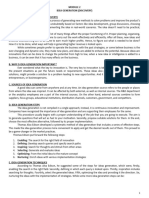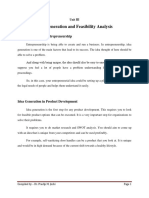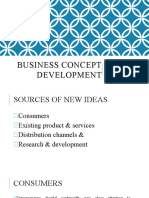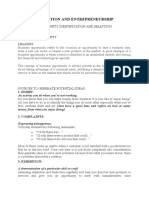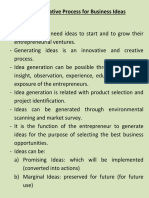0% found this document useful (0 votes)
18 views10 pagesUnit 4
The document outlines the process of idea generation and its importance in transforming concepts into business opportunities. It discusses various sources and techniques for generating ideas, as well as methods for identifying and classifying them based on innovation type, feasibility, business value, urgency, and market impact. Additionally, it describes the steps involved in turning an idea into a viable business opportunity, including market research, feasibility analysis, and business planning, while also highlighting common challenges faced in this process.
Uploaded by
Lakshit MittalCopyright
© © All Rights Reserved
We take content rights seriously. If you suspect this is your content, claim it here.
Available Formats
Download as PDF, TXT or read online on Scribd
0% found this document useful (0 votes)
18 views10 pagesUnit 4
The document outlines the process of idea generation and its importance in transforming concepts into business opportunities. It discusses various sources and techniques for generating ideas, as well as methods for identifying and classifying them based on innovation type, feasibility, business value, urgency, and market impact. Additionally, it describes the steps involved in turning an idea into a viable business opportunity, including market research, feasibility analysis, and business planning, while also highlighting common challenges faced in this process.
Uploaded by
Lakshit MittalCopyright
© © All Rights Reserved
We take content rights seriously. If you suspect this is your content, claim it here.
Available Formats
Download as PDF, TXT or read online on Scribd
/ 10


